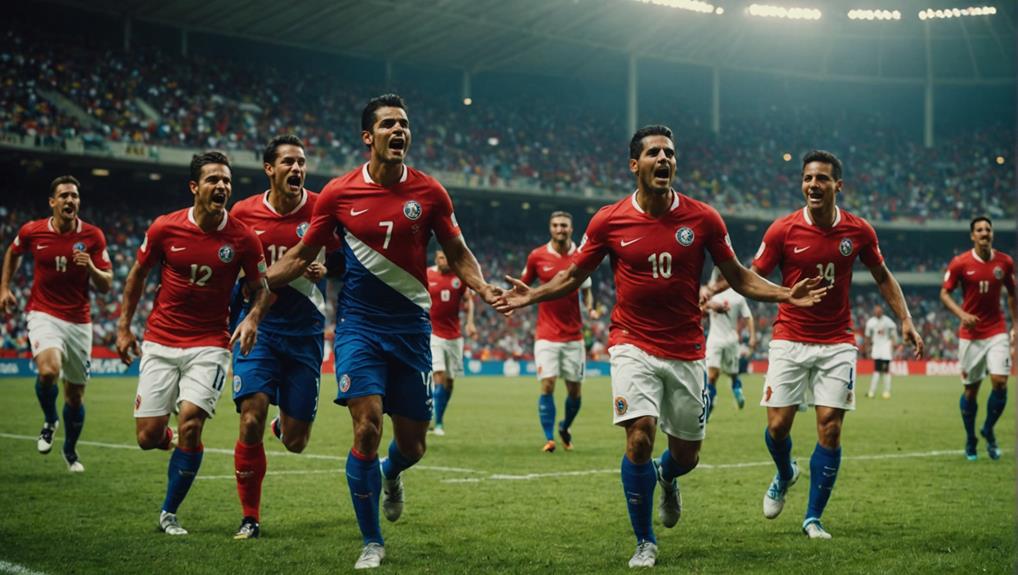
Inside the Costa Rica Futbol Team: History and Highlights
July 27, 2024Step inside the alluring world of the Costa Rica national soccer team and uncover a legacy filled with historical triumphs and standout moments. From their nickname 'The Gold Shorties' to their surge as a dominant force in CONCACAF, the team's journey is a testament to resilience and determination. Witness their impressive World Cup performances, including their memorable quarter-final run in 2014. With legendary players like Keylor Navas and notable achievements like winning the CONCACAF Championship, Costa Rica's impact on international football is undeniable. Explore further to discover the depth of their success and the promising future that lies ahead.
Historical Overview
Step back in time to explore the historical roots of the Costa Rica national team. Debuting in 1921, the team quickly gained recognition, earning the nickname 'The Gold Shorties' in the late 1940s. Costa Rica emerged as the second strongest team in CONCACAF during the 1950s and 1960s. However, their World Cup dreams were dashed in the subsequent decades, with failures to qualify in the 1970s and 1980s.
The late 60s marked a turning point as Costa Rica faced challenges from rising teams, impacting their international standing. Despite these setbacks, Costa Rica experienced a resurgence in 2014, with a stellar World Cup performance. They topped Group D and made history by reaching the quarter-finals.
Notable players like Celso Borges and Rolando Fonseca have left a lasting impact on the national team's legacy, contributing to its rich history and memorable moments. The Costa Rica national team's journey has been a blend of highs and lows, shaping its identity in the world of football.
World Cup Performances
Exploring the Costa Rica national team's World Cup performances showcases their journey from historical setbacks to notable achievements on the global stage. La Sele has left a mark in international football with their impressive showings in various FIFA World Cup editions.
- Costa Rica's debut in the 1990 World Cup marked their entry into the knockout stage, setting a foundation for future successes.
- The 2014 World Cup stands out as a significant milestone for Costa Rica, as they defied expectations and reached the quarter-finals by overcoming strong opponents like Uruguay and Italy.
Costa Rica's World Cup performances reflect their growth and determination on the global stage, earning them respect and recognition in the domain of international football.
Recent World Cup Campaigns
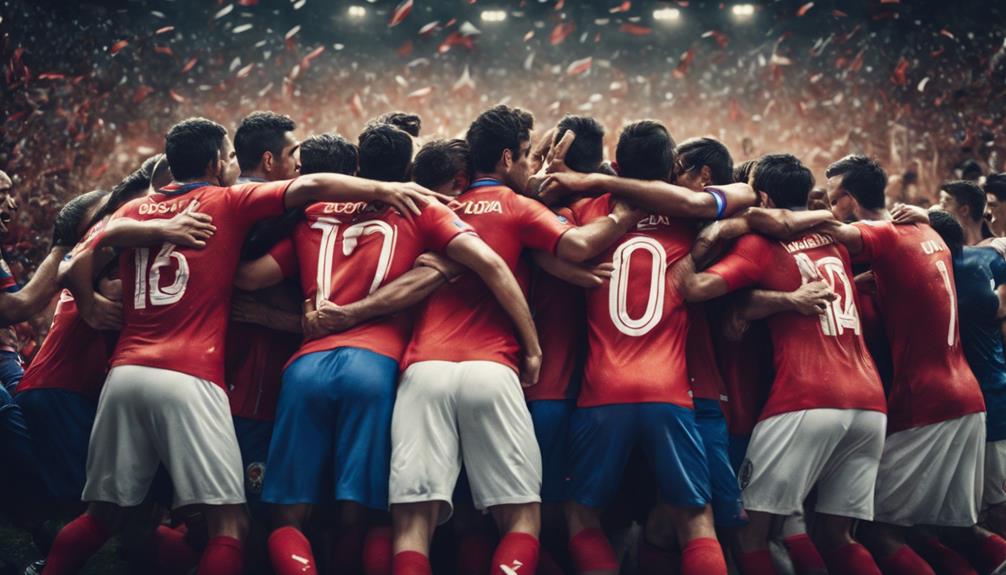
Costa Rica's recent World Cup campaigns have showcased both their challenges and successes on the international stage. In the 2018 World Cup, the team faced tough competition and exited at the group stage after losses to Serbia and Brazil. However, their resilience showed in the 2022 World Cup qualifiers, where they finished fourth in the final qualifying round. Despite initial setbacks, Costa Rica secured their spot in the 2022 World Cup through the inter-confederation play-offs, defeating New Zealand.
The 2022 World Cup presented its own set of challenges for Costa Rica. The team faced a significant 7-0 defeat against Spain, highlighting the tough competition they encountered on the world stage. Despite this setback, Costa Rica's ability to qualify for the tournament and compete against top-tier teams demonstrates their determination and potential for success in future World Cup campaigns.
Player Records
You'll be amazed by the impressive player records of the Costa Rica national team. Celso Borges leads the pack with the most appearances, while Rolando Fonseca stands out as the all-time top scorer.
Keep an eye out for players like Paulo Wanchope and Bryan Ruiz, known for their high goal-to-cap ratios.
Notable Player Appearances
The Costa Rica national team boasts remarkable player records, highlighting the notable appearances of key individuals who've made a lasting impact on the squad.
Among these standout players, Celso Borges stands out with an impressive 163 caps, demonstrating his commitment and contribution to the Costa Rica national team.
Additionally, Rolando Fonseca's all-time leading 47 goals showcase his scoring prowess and enduring legacy within Costa Rican football.
Paulo Wanchope and Bryan Ruiz also shine bright, not just for their goal-scoring abilities but for their consistent performances that have elevated the team on numerous occasions.
These players exemplify the depth of talent and dedication within the Costa Rica national team, setting a high standard for future generations to follow.
The player records of these exceptional individuals underscore the rich history and success of Costa Rican football, making them true icons of the sport in the country.
Leading Goal Scorers
Among the standout players in the history of the Costa Rica national team are its leading goal scorers, whose impressive records reflect their significant impact on the squad. Rolando Fonseca stands out as the all-time top goal scorer for Costa Rica, having netted an impressive 47 goals during his international career.
Paulo Wanchope, known for his efficiency in front of goal, also holds a prominent place among Costa Rica's leading goal scorers, boasting a high goal-to-cap ratio.
Bryan Ruiz, with his attacking prowess, has made substantial contributions to the Costa Rican national team's goal tally. These players have played pivotal roles in driving Costa Rica's success on the international stage, with their goal-scoring records serving as a testament to their importance in the history of the national team.
Their achievements exemplify the talent and dedication that have characterized Costa Rica's top goal scorers over the years.
High Goal Efficiency
In goal efficiency records, Costa Rica's national team players have showcased exceptional scoring prowess, contributing greatly to their team's success. Several players have stood out for their high goal efficiency in international matches:
- Rolando Fonseca holds the record for the most goals scored in Costa Rica national team history with 47 goals.
- Paulo Wanchope boasts a remarkable goal-to-cap ratio, scoring 45 goals in 73 appearances for the national team.
These players, along with others like Celso Borges, who's scored 25 goals in 163 appearances, have exemplified Costa Rica's ability to produce talent with exceptional goal-scoring abilities. Their consistent performances have been instrumental in the national team's achievements on the international stage.
Team Details
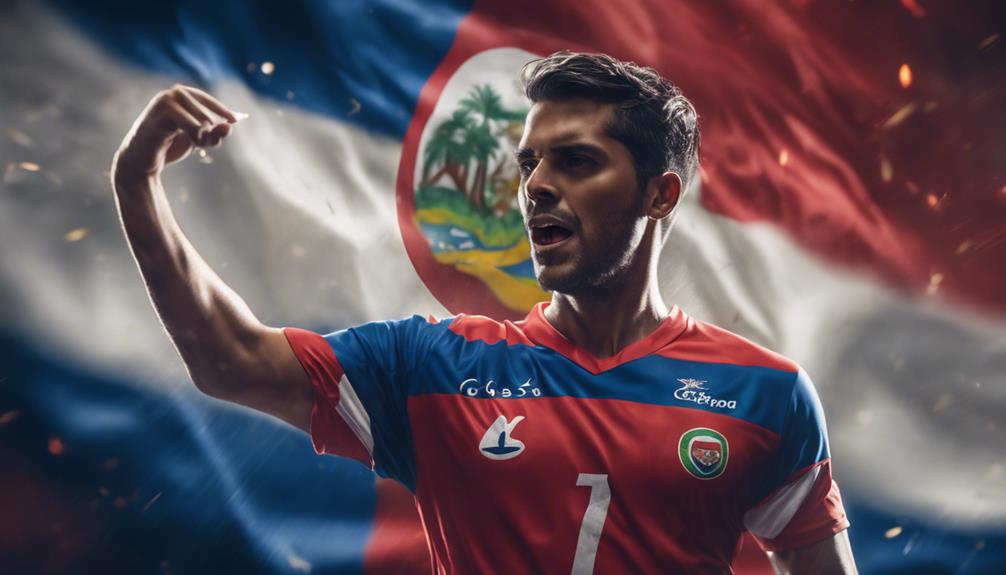
Let's talk about some key aspects that define the Costa Rica national team.
Their team achievements, notable players, and their unique kit and stadium are all essential elements that contribute to the team's identity and success on the field.
These details shed light on the rich history and traditions that make the team stand out in the world of soccer.
Team Achievements
The Costa Rica national team has garnered notable achievements throughout its history, showcasing their prowess on the international football stage. Some of their standout accomplishments include:
- Reaching the quarter-finals in the 2014 World Cup, a historic feat that captured the world's attention and solidified their reputation as a competitive team.
- Winning the CONCACAF Championship multiple times, demonstrating their dominance within the region and their ability to compete at a high level.
These achievements haven't only brought glory to Costa Rica but have also established them as a formidable force in international football. With a rich history, a strong presence in the Primera División, and a passionate fan base, the Costa Rica national team continues to leave a lasting impact on the world of soccer.
Notable Players
Among the notable players on the Costa Rica national team are Bryan Ruíz, Francisco Calvo, Brandon Aguilera, Keylor Navas, and Joel Campbell.
Ruíz, an attacking midfielder and winger, stands out as one of Costa Rica's best footballers.
Calvo, a center-back who debuted in 2011, represented Costa Rica in the 2018 World Cup.
Aguilera, a talented midfielder, is recognized as one of CONCACAF's most promising young talents.
Keylor Navas, a skilled goalkeeper, is widely regarded as one of the best in Central America and has been instrumental for Costa Rica.
Joel Campbell, known for his speed and technical prowess, has been a key contributor as both a forward and winger for the national team.
These footballers bring a mix of experience, skill, and talent to the Costa Rica squad, making them essential assets in the team's pursuit of success on the international stage.
Kit and Stadium
Sporting the iconic red jersey, blue shorts, and white socks, the Costa Rica national team's kit embodies the nation's pride and tradition on the football pitch. The team's kit providers have varied over time, with both New Balance and Adidas having outfitted the players in recent years. This symbolizes the blend of modernity and tradition in Costa Rican football.
The Estadio Nacional, situated in San Jose, serves as the Costa Rica national team's home ground, where roaring fans gather to support their beloved team. The stadium's atmosphere is electric during matches, creating a formidable home advantage for the Costa Rican players.
The strong fan base of the Costa Rica national team plays an essential role in filling Estadio Nacional with passionate supporters, showcasing the unwavering dedication and love for football in the country. The combination of a vibrant kit, a historic stadium, and passionate fans makes the Costa Rica national team a force to be reckoned with on the international stage.
Costa Rica Soccer Overview
Costa Rica's football landscape is characterized by the Primera División and fierce team rivalries, reflecting a rich tradition of competitive soccer. The professional league, Primera División, founded in 1921, features prominent teams like Saprissa, Alajuelense, and Herediano, sparking intense rivalries, especially between Saprissa and La Liga during the summer and winter seasons.
The national team, known as La Sele, has a history of qualifying for multiple World Cups, underlining Costa Rica's strong soccer heritage. Particularly remarkable was the team's outstanding performance in the 2014 World Cup, where they advanced to the quarter-finals, marking a significant milestone for the country's soccer journey.
Costa Rica continues to invest in football infrastructure to sustain and enhance the national team's success in international competitions, demonstrating a commitment to nurturing the sport's growth and achievements on the global stage.
National Team and Domestic Leagues
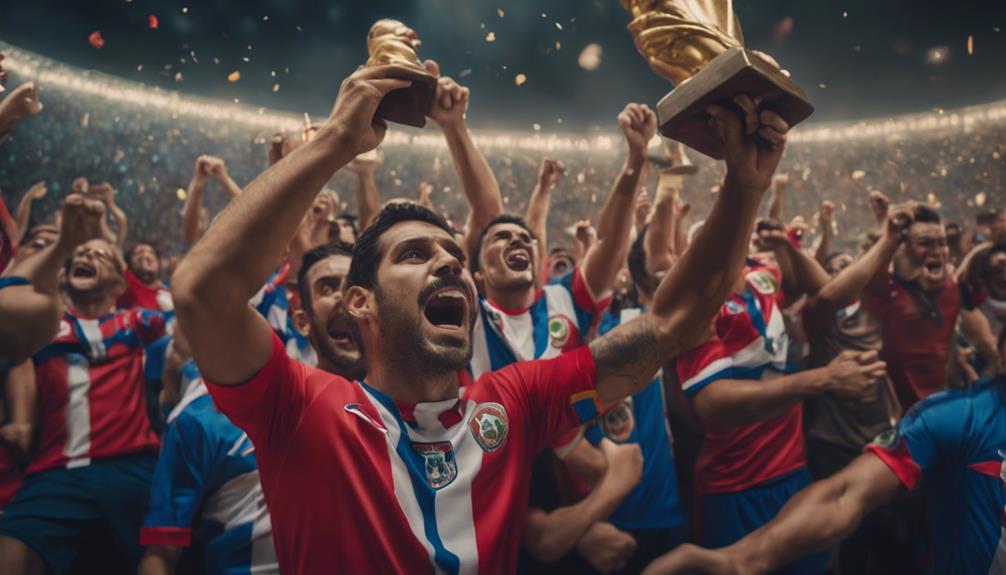
You'll discover that the Liga FPD in Costa Rica isn't just about clubs competing for titles; it's a hotbed of intense rivalries like the one between Saprissa and Alajuelense that fuel the passion of fans.
These rivalries aren't just about fierce matchups; they also contribute to the competitiveness that shapes the league's success.
Moreover, the league serves as an essential breeding ground for developing talented players who go on to represent the national team, showcasing the importance of robust player development programs in Costa Rican football.
League Successes and Rivalries
The Liga FPD in Costa Rica boasts a highly competitive environment marked by intense rivalries and notable successes among clubs like Saprissa and Alajuelense. The league serves as a battleground for these football powerhouses, fueling the passion of fans and players alike.
Costa Rican clubs have made their mark on the international stage, with successful showings in prestigious competitions like the CONCACAF Champions League.
Rivalries within the Liga FPD, especially between Saprissa and Alajuelense, add an extra layer of excitement and intensity to the matches, enthralling audiences.
The league's structure, operating in two seasons, ensures a consistent flow of football action throughout the year, keeping fans engaged and players in top form.
These elements contribute to the Liga FPD's reputation as a hotbed for talent development and fierce competition, ultimately shaping the success of Costa Rican football on both the domestic and international fronts.
Player Development Programs
In the domain of player development programs, both on the national team and in domestic leagues, a strong emphasis is placed on nurturing talent from grassroots levels to guarantee a steady supply of skilled athletes for Costa Rican soccer.
Costa Rica has invested significantly in youth development programs, with a particular focus on grassroots soccer, to cultivate promising players for the national team. Academies like Deportivo Saprissa play a pivotal role in honing the skills of young athletes, shaping them for future success in Costa Rican football.
The youth national teams have shown commendable performances in regional competitions, working diligently to provide a pipeline of talented individuals for the senior national team.
Additionally, women's soccer in Costa Rica is experiencing a surge in popularity, leading to increased opportunities and support for female players across all levels of the game.
Importantly, the Liga FPD, Costa Rica's premier football league, acts as a fertile ground for nurturing gifted players who often go on to represent the national team.
Youth Development and Women's Soccer
As Costa Rica focuses on youth development and the growth of women's soccer, investments in training programs and grassroots initiatives are key components in nurturing talent for future success.
Costa Rica has invested in youth development programs and academies like Deportivo Saprissa to cultivate young talent in soccer. The youth national teams in Costa Rica have shown promise in regional competitions, serving as a pipeline for skilled players to join the national team.
Women's soccer in Costa Rica is on the rise, with the women's national team, known as 'Las Ticas,' making significant progress in international competitions. Hosting the FIFA U-17 Women's World Cup in 2014 highlighted Costa Rica's efforts to support and promote female players in the country.
Additionally, grassroots soccer plays a pivotal role in Costa Rica's youth development strategy, providing young players with opportunities to excel and potentially represent the national team.
Impact on Society
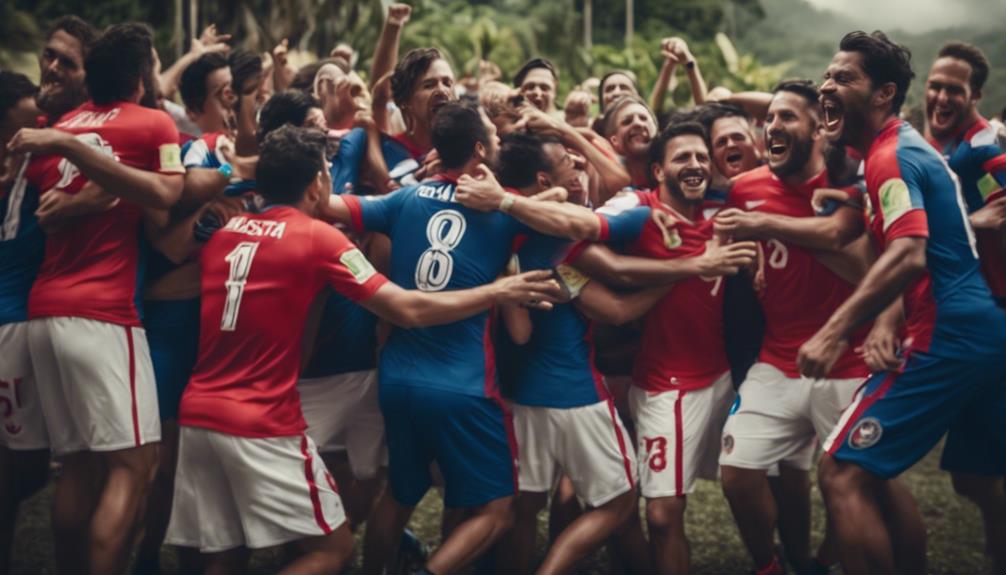
Soccer in Costa Rica serves as a unifying force, fostering national pride and solidarity among its people. The sport's success not only brings joy to fans but also offers opportunities for social mobility to talented players.
Costa Rica's achievements in the World Cup have inspired the younger generation, igniting passion and pride among all age groups. The national team's triumphs have sparked increased investment in football infrastructure and youth development programs, aiming to nurture the next generation of players.
Soccer isn't merely a game in Costa Rica; it's a cultural phenomenon deeply ingrained in society's fabric. The sport's impact goes beyond the field, influencing the country's identity and sense of unity. Through soccer, Costa Ricans find a common ground, celebrating victories together and rallying behind their team with unwavering support.
Notable Players
Frequently hailed for their exceptional skills and contributions to the Costa Rica national team, notable players such as Bryan Ruíz, Francisco Calvo, Brandon Aguilera, Keylor Navas, and Joel Campbell have left a lasting impact on the world of football.
Bryan Ruíz, known for his versatility as an attacking midfielder and winger, showcases Costa Rica's talent on the international stage.
Francisco Calvo's defensive prowess as a center-back was evident in the 2018 World Cup, where he represented Costa Rica with distinction.
Brandon Aguilera's recognition as one of the top talents in the CONCACAF region underscores Costa Rica's commitment to youth development.
- Bryan Ruíz: Versatile attacking midfielder and winger.
- Francisco Calvo: Stellar center-back in the 2018 World Cup.
These players, along with Keylor Navas and Joel Campbell, continue to be key figures in Costa Rica's national team, representing their country with skill and passion on the football pitch.
Conclusion
As you explore the history of the Costa Rica Futbol team, you'll be amazed by their impressive World Cup performances.
Did you know that Costa Rica reached the quarterfinals in the 2014 World Cup, their best finish ever?
This team has consistently demonstrated their talent on the world stage and continues to make their country proud.
Keep investigating their journey to uncover more exciting moments and records that have shaped their legacy in the soccer world.


